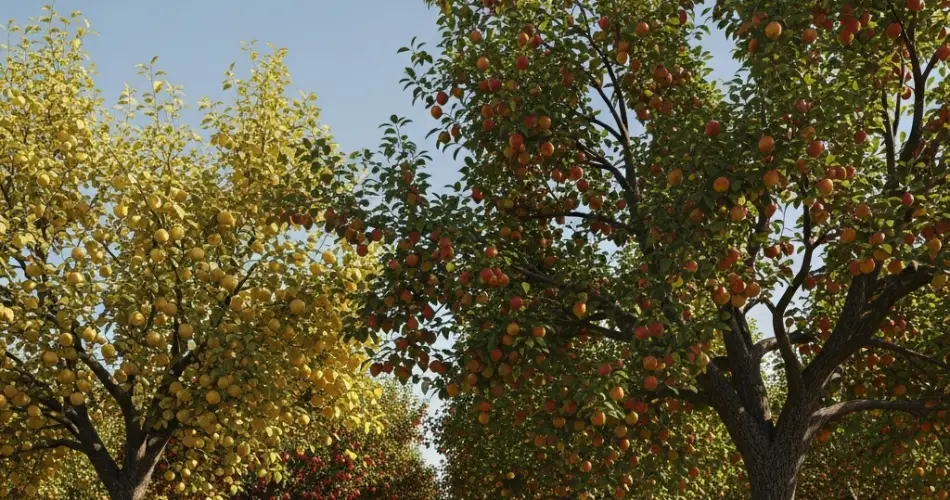Propagating fruit trees and citrus plants can be both rewarding and cost-effective. Instead of buying new trees, you can create your own healthy, productive plants by rooting branches directly on the parent plant. Two of the most effective and accessible methods to achieve this are air layering and ground layering. Both techniques stimulate root growth on branches while they remain attached to the mother plant, ensuring a higher success rate for transplanting.
This article will guide you through how air layering and ground layering work, their benefits, and step-by-step instructions for propagating citrus and other fruit trees successfully.
What is Layering?
Layering is a vegetative propagation method where a branch or stem develops roots while still connected to the parent plant. Once roots are well-established, the new plant can be cut from the parent and transplanted.
There are different types of layering, but the most popular for fruit trees are:
-
Air layering: Roots form on an exposed section of a branch wrapped in a moist medium above ground.
-
Ground layering: A low-hanging or flexible branch is bent down and buried partially in the soil to encourage root development.
Both methods leverage the plant’s natural ability to generate roots when stems are in contact with moisture and soil or a moist environment.
Why Use Layering?
Layering is ideal for propagating fruit trees and citrus for several reasons:
-
Higher success rate: Because the branch remains connected to the mother plant, it continues receiving water and nutrients, reducing transplant shock.
-
Faster rooting: Compared to seeds or cuttings, layering encourages quicker root formation.
-
Clonal propagation: New plants are genetically identical to the parent, ensuring the same fruit quality.
-
Cost-effective: No need to buy new plants; propagate your own.
-
Can propagate mature wood: Layering works well with semi-hardwood or hardwood branches that might not root easily from cuttings.
Air Layering: Step-by-Step Guide
Air layering involves wounding a branch and encouraging roots to form around the wound wrapped in moist sphagnum moss or a similar material.
Materials Needed:
-
Sharp knife or pruning tool
-
Sphagnum moss or coconut coir
-
Plastic wrap or plastic bag
-
Twine, tape, or twist ties
-
Rooting hormone (optional)
Steps:
-
Select a healthy branch: Choose a firm, healthy branch about the thickness of a pencil or larger.
-
Prepare the wound: About 12-18 inches from the tip, make a ring cut by removing a 1 to 2-inch wide ring of bark all around the branch, exposing the white wood (cambium layer). Remove the bark carefully without damaging the wood beneath.
-
Apply rooting hormone (optional): Dust the exposed wood with rooting hormone to stimulate root growth.
-
Moisten the sphagnum moss: Soak sphagnum moss in water, then squeeze out excess moisture so it’s damp but not dripping.
-
Wrap the moss around the wound: Pack a generous amount of moss over the exposed area.
-
Cover with plastic: Wrap the moss tightly with plastic wrap or place a plastic bag around the moss to retain moisture. Secure both ends with tape or twine to hold everything in place and keep moisture from escaping.
-
Wait and monitor: Check periodically to ensure moss stays moist. Roots will begin to develop within 4 to 8 weeks depending on the plant and conditions.
-
Cut and transplant: When roots are thick and healthy, cut the branch below the rooted section and pot it in soil or transplant directly to the ground.
Ground Layering: Step-by-Step Guide
Ground layering involves bending a low branch to the soil and encouraging it to root underground.
Materials Needed:
-
Sharp knife or pruning tool
-
Garden stakes or U-shaped pins
-
Soil or compost
-
Watering can or hose
Steps:
-
Choose a flexible branch: Select a low-hanging branch or one that can be bent to touch the ground without breaking.
-
Wound the branch: Make a small wound or scrape on the underside of the branch where it will contact the soil to stimulate rooting.
-
Bury the wounded section: Dig a shallow trench about 3 to 6 inches deep. Place the wounded part of the branch into the trench.
-
Secure the branch: Use garden stakes, pins, or heavy rocks to keep the branch firmly buried.
-
Cover with soil: Cover the buried section with loose soil or compost, gently pressing it down.
-
Water regularly: Keep the soil moist but not soggy.
-
Wait for roots: Depending on the species, roots can develop in 2 to 6 months.
-
Separate and transplant: Once a healthy root system has formed, cut the new plant from the parent and transplant as desired.
Tips for Successful Layering
-
Choose healthy, disease-free parent plants.
-
Perform layering during the growing season when the plant is actively growing (spring or early summer).
-
Keep the rooting medium consistently moist to encourage root growth.
-
Be patient; some plants may take longer to root.
-
Protect the layered branches from extreme weather or pests.
Which Plants Can You Layer?
Layering works well for many fruit trees and citrus plants, including:
-
Citrus trees like oranges, lemons, and limes
-
Fig trees
-
Pomegranates
-
Guava
-
Grapevines
-
Persimmons
-
Some stone fruits like peaches and plums
Benefits Beyond Propagation
Besides cloning your favorite fruit trees, layering promotes healthier trees by encouraging strong root systems and allowing you to propagate older or hard-to-root varieties that may not succeed with traditional cuttings.
Conclusion
Air layering and ground layering are excellent propagation methods to root almost any fruit or citrus tree. These natural, low-cost techniques ensure a higher survival rate and faster growth for new plants, allowing gardeners and growers to expand their orchards efficiently and sustainably.
By following the detailed steps above and providing consistent care, you can easily root branches and create thriving new trees from your existing plants. Whether you want to multiply your citrus trees or experiment with other fruit varieties, layering offers a reliable and effective propagation solution.



